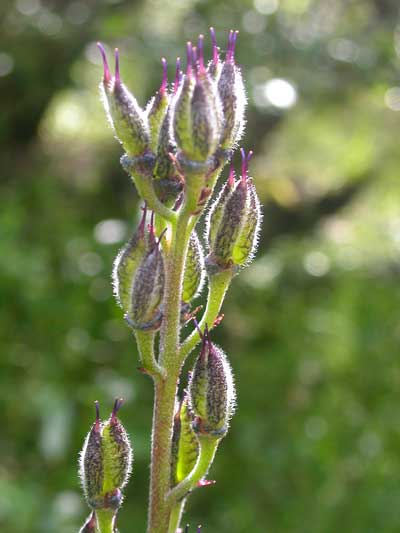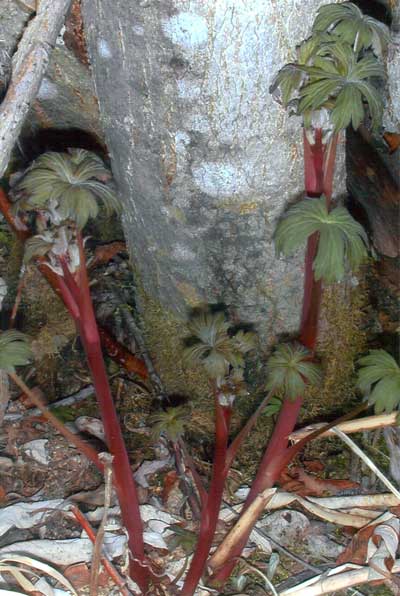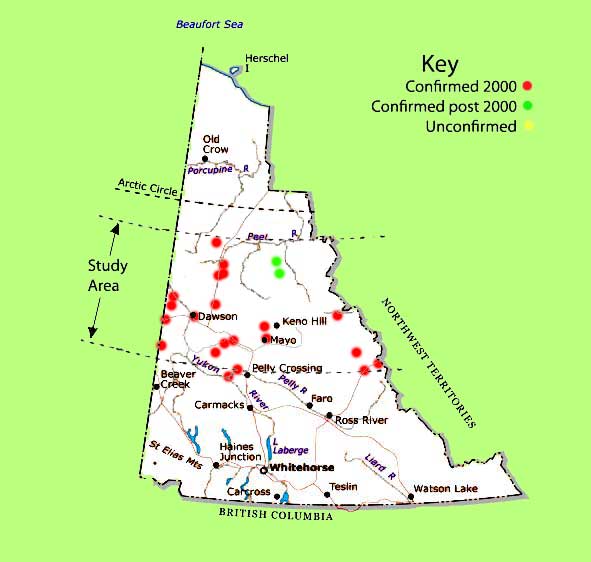Delphinium glaucum : Tall Larkspur
Taxonomy | Description | Biology | Ecology | Uses | Images | Range Maps
Taxonomy |
Scientific Name:Kingdom: Plantae Division:
Class: Dicoteldonae (two seed-leaves) Family: Ranunculaceae (Crowfoot/Buttercup Family) Genera: Delphinium (Larkspur) (Gk. delphin= dolphin; referring to the resemblence of the hollow sepal appendage to a dolphins head.) Species: glaucum (Gk. glaukos= blue-grey-green; referring to the colour of the leaves) Synonym(s): D. brownii English Name(s):Tall Larkspur, Tall Delphinium, Sierra/Glaucus Larkspur First Nation Names:
|
Description |
Structure:
Leaves:
Reproductive Parts:
Seed:
Not to Be Confused With:
|
Biology |
Physiology:
Life Cycle:Seasonal Cycle:
|
Images |
|
Leaves Seed follicles plants sprouting Illustrated flora of BC |
Range Maps |
|
World Range: North American, cordilleran; ID, and western MT, north to Arctic coast.
In Yukon: found throughout the territory |





